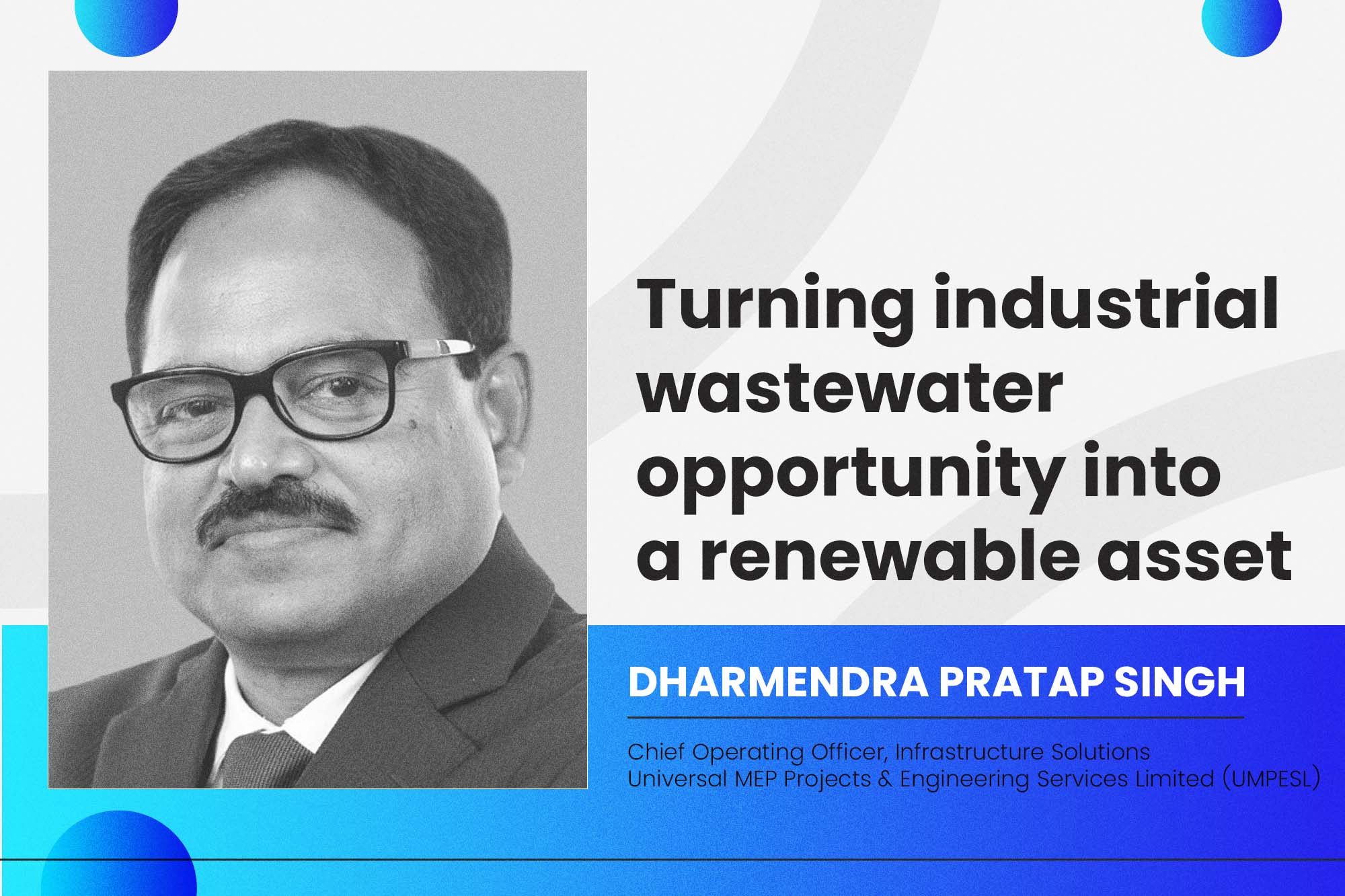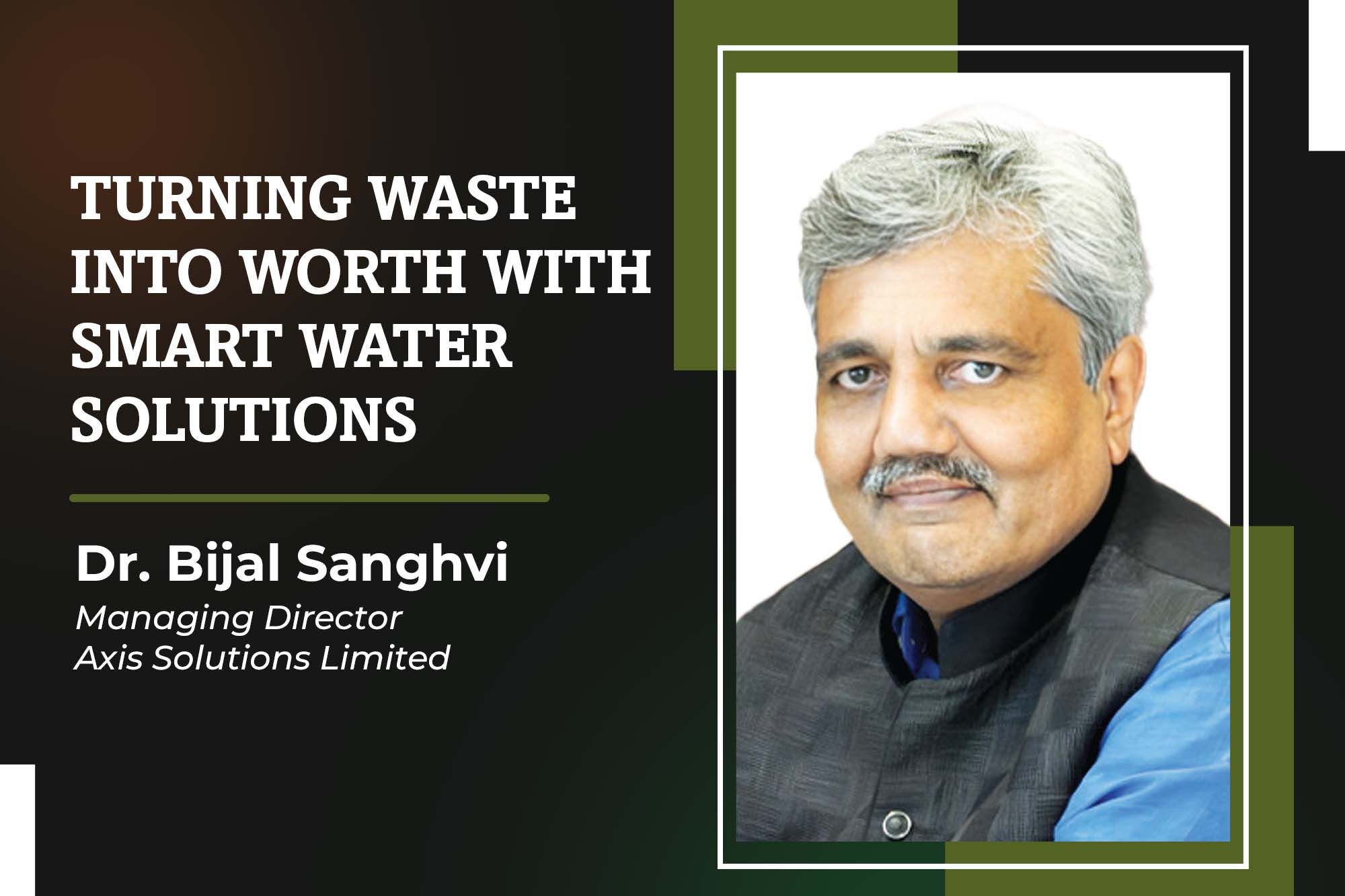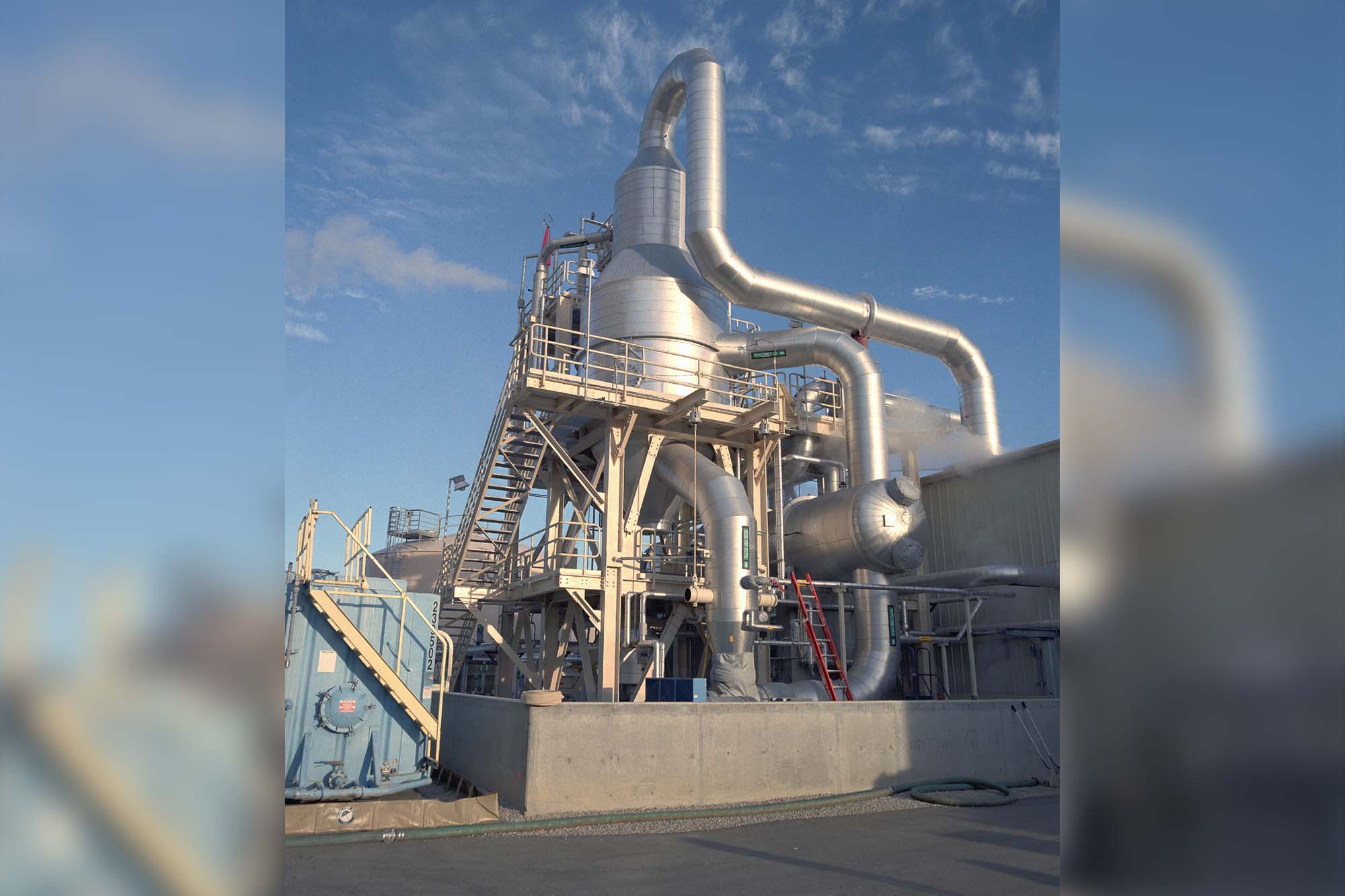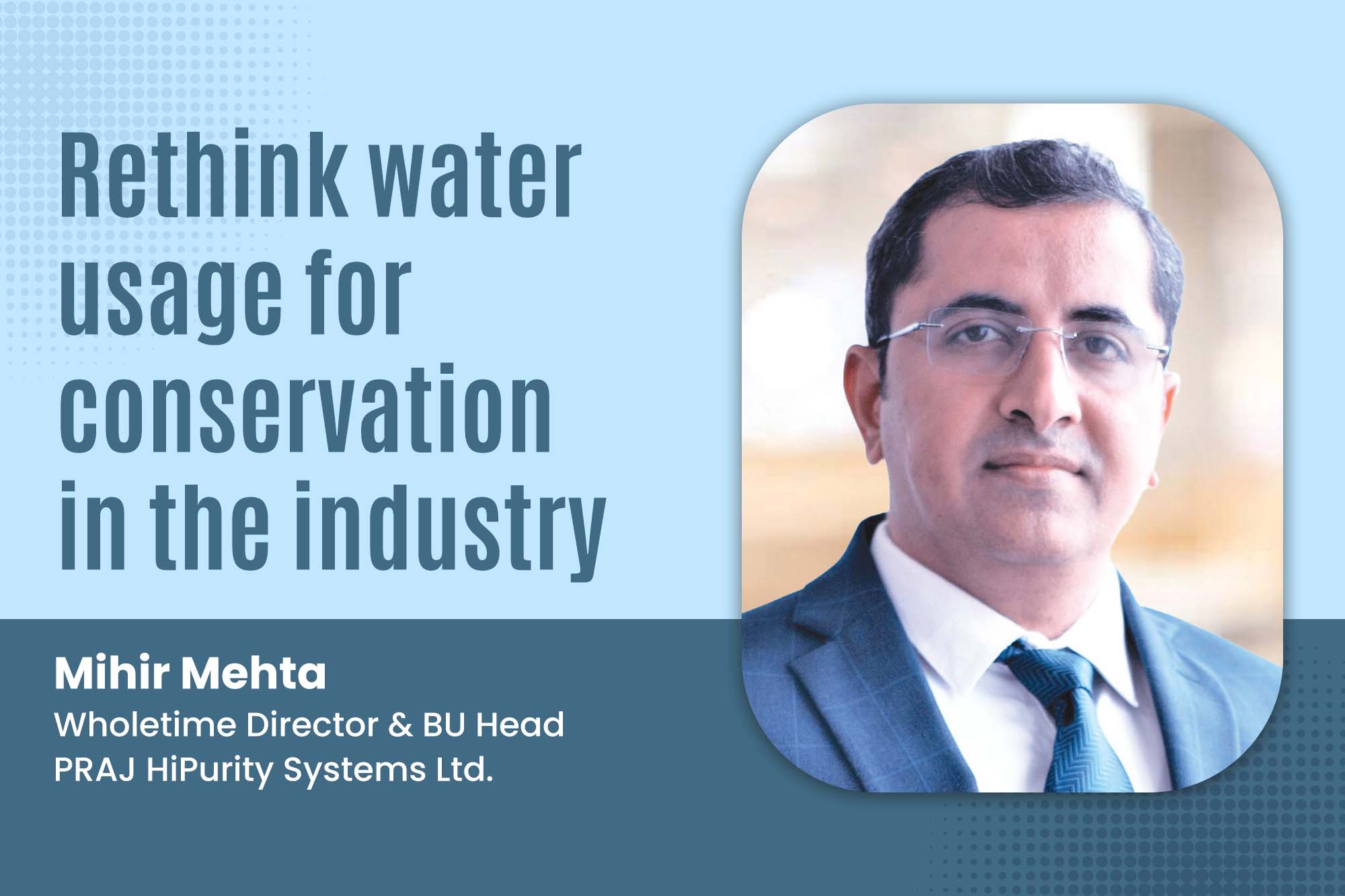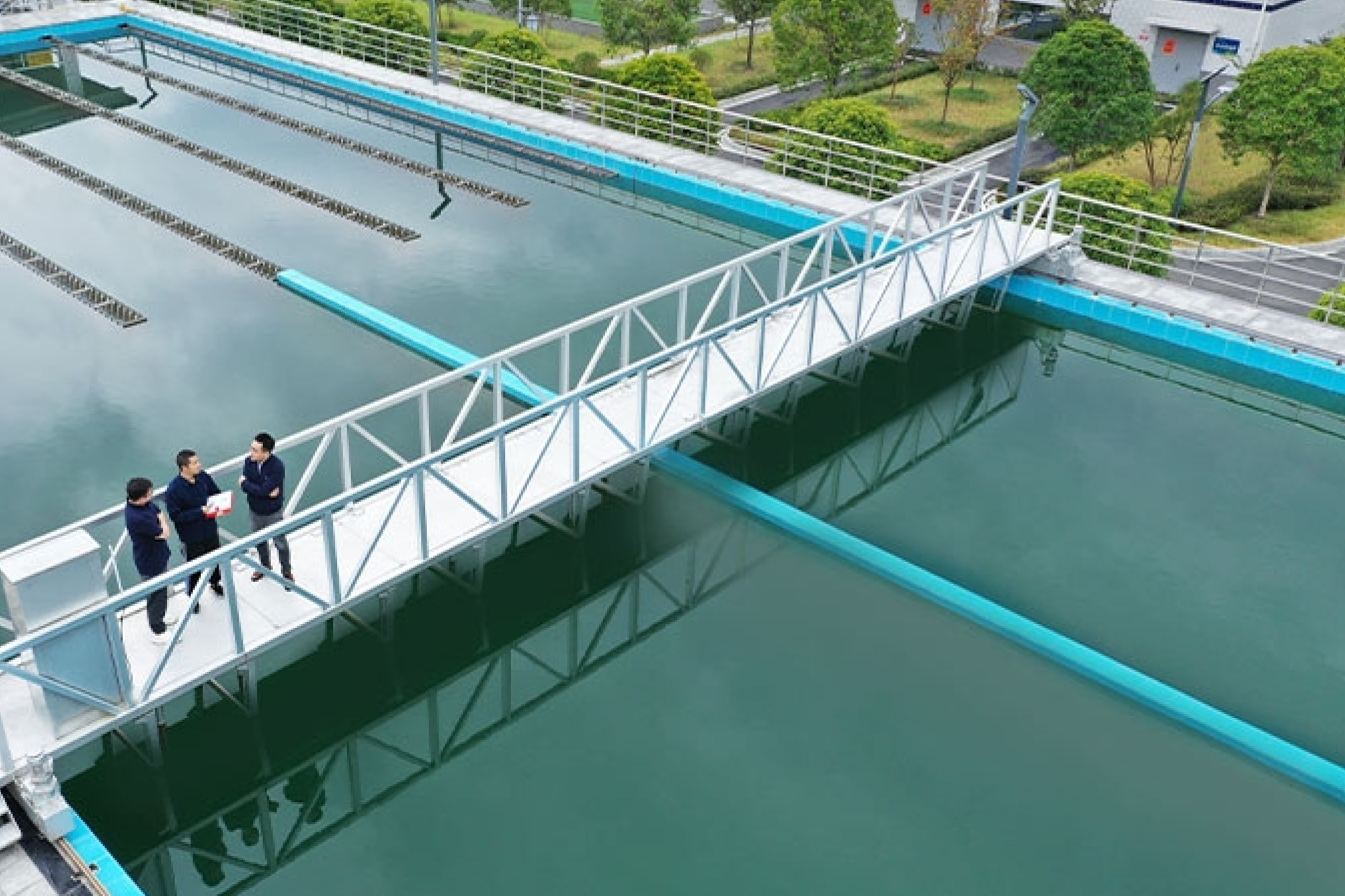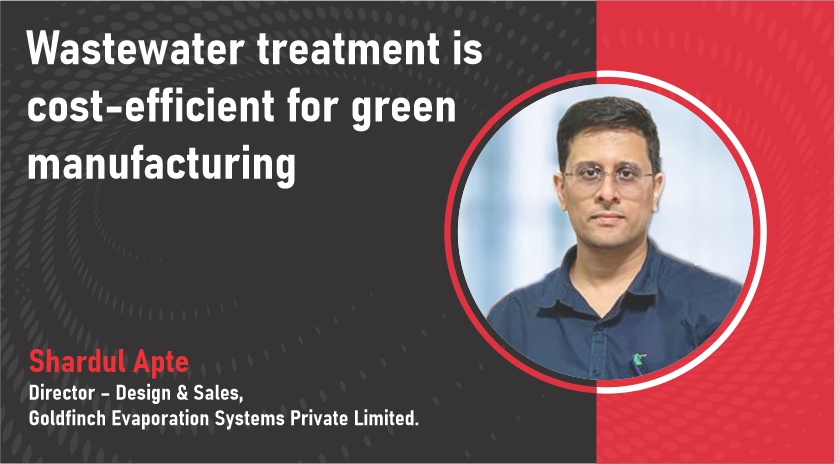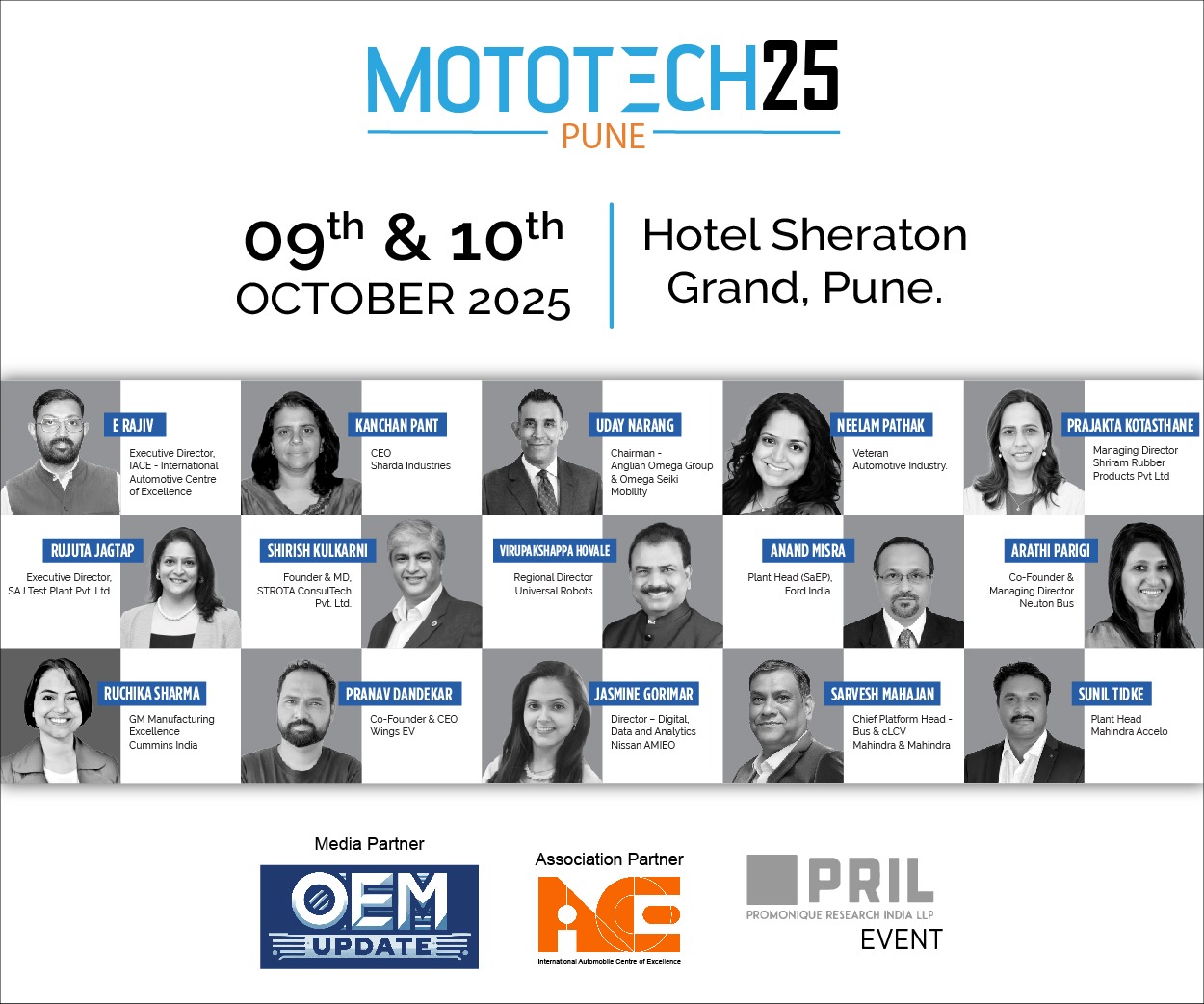Turning industrial wastewater opportunity into a renewable asset
By Staff Report June 19, 2025 6:20 pm IST
The circular water economy model promotes long-term sustainability by minimising waste, conserving resources, and increasing system efficiency. It is a pathway to reduce dependence on freshwater and build resilience against climate change and operational disruptions. Dharmendra Pratap Singh, Chief Operating Officer of Infrastructure Solutions at UMPESL, emphasises the importance of a circular water economy in India.
Water scarcity is a pressing environmental and economic issue, especially in India, where over 1.4 billion people depend on just 4% of the world’s freshwater resources. As the Indian wastewater treatment market surges, there is an opportunity to shift from linear consumption patterns to a circular water economy, where wastewater is viewed as a renewable asset. India holds the fifth-largest wastewater treatment market globally, underscoring its potential for innovation and leadership in this sector.
The future holds an opportunity to reimagine wastewater as a resource rather than a burden. The idea of a circular water economy is gaining momentum, promising to revolutionise how water is sourced, used, treated, and reused—especially across industries. A circular water economy centres on closing the loop, where water is continually reused through treatment, recycling, and reclamation. Unlike the traditional linear approach of extract-use discharge, the circular model promotes long-term sustainability by minimising waste, conserving resources, and increasing system efficiency.
This concept is particularly relevant in India, where erratic rainfall, over-exploited groundwater, and polluted water bodies have compounded the crisis. The circular model offers a pathway to reduce dependence on freshwater and build resilience against climate change and operational disruptions.
Voltas, with its wholly owned subsidiary, Universal MEP Projects & Engineering Services Limited (UMPESL), is enhancing India’s water security by advancing treatment, recycling, and responsible consumption practices.
Although progress has been made through water audits and conservation initiatives, the transition towards full circularity remains uneven. Forward-thinking companies are taking a proactive approach, re-engineering their supply chains to integrate water-efficient technologies, ensure sustainable sourcing, and enforce wastewater reuse standards across their vendor ecosystems.
Here are several practical and impactful strategies that companies can implement to reduce water risks and contribute to a sustainable future:

Sustainable water sourcing
The first step in water stewardship is understanding where and how water is drawn. Businesses must prioritise sourcing from sustainable and low-impact water sources, be it rainwater harvesting, groundwater recharge systems, or municipal recycled water. Conducting Water Risk Assessments (WRA) across the supply chain can help identify hotspots and take preemptive action before a crisis strikes.
Water-efficient manufacturing
The intervention of reducing water consumption at the process level remains a crucial step. Adopting closed-loop water systems, investing in water-efficient technologies, and retrofitting existing systems with smart meters and low-flow fixtures can significantly curb usage. In textiles, chemicals, and food processing sectors where water use is intensive, this can lead to conservation with cost savings.
Wastewater recovery and reuse
A linchpin of the circular water economy is wastewater reuse. Treating greywater and blackwater to a standard suitable for reuse, whether in irrigation, cooling, flushing, or even in processes, is no longer a futuristic concept but an achievable goal. Zero Liquid Discharge (ZLD) systems are becoming increasingly viable with advances in membrane bioreactor (MBR) and reverse osmosis (RO) technologies.
Community water partnerships
Beyond internal efficiency, companies can drive impact by supporting local water projects. Whether it is rejuvenating ponds, constructing check dams, or improving access to sanitation, engaging with communities fosters goodwill while contributing to regional water security.
Digital Water Management
Digitalisation offers a transformative pathway for water efficiency. Smart water grids, IoT-based sensors, real-time monitoring, and AI-powered analytics can enable predictive maintenance, leak detection, and usage optimisation. This visibility empowers companies to make data-driven decisions, enhancing accountability and performance.
Employee and community engagement
Promoting water literacy among employees, suppliers, and surrounding communities fosters a culture of conservation. Internal campaigns, community awareness drives, and school education initiatives can build lasting behavioural changes.
Government initiatives, including the Jal Jeevan Mission, Atal Mission for Rejuvenation and Urban Transformation (AMRUT), and Namami Gange, are bolstering infrastructure for water access and quality. There is increasing encouragement for industries to install ETPs, adopt ZLD, and engage in water credits and trading mechanisms. The State Water and Sanitation Missions (SWSMs) are collaborating with public and private stakeholders to provide drinking water and sanitation services to rural and semi-urban populations. This expanding ecosystem will be fertile ground for public-private collaboration and technology deployment.

UMPESL has engaged in initiatives that reflect the circular water ethos. Treated drinking water is now reaching several villages through rural water supply projects commissioned in Ayodhya and Deoria under the State Water & Sanitation Mission. Similarly, internal facilities are adopting measures like zero-liquid discharge, wastewater recycling for horticulture, and partnerships for common effluent treatment in industrial estates.
Voltas has partnered with the Tata Group’s Project Aalingana, aiming to achieve net zero by 2045 and become water-neutral by 2030. Their Waghodia factory is equipped with a Zero Liquid Discharge (ZLD) system, ensuring that not a single drop of wastewater goes unutilised. Meanwhile, in Pantnagar, operations are integrated with a common Effluent Treatment Plant (ETP), demonstrating efficient collective water management.
India’s progress towards a water-secure future depends on the swift adoption of the circular model by industries. Turning wastewater into a sustainable resource is a practical, scalable, and essential approach to managing our most precious resource. Businesses must move from intention to action—embedding water circularity into their core strategy, operations, and culture. By doing so, they will future-proof their growth and contribute to a broader ecological and social transformation.
Cookie Consent
We use cookies to personalize your experience. By continuing to visit this website you agree to our Terms & Conditions, Privacy Policy and Cookie Policy.



